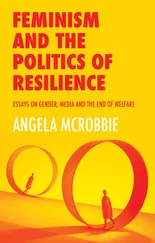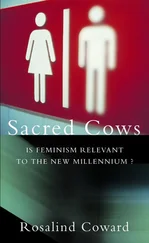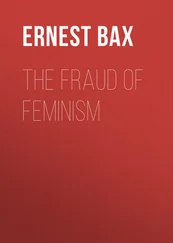Much as I share an enthusiasm for technoscience, I want to introduce a note of caution here against a complete de-naturalization of bodies. It is paradoxical, to say the least, that a system built on bio-power displaces the human the better to exploit its genetic material. The same system that profits from life itself neglects the humans crushed by the structural injustices of our social and economic systems, including structural indebtedness (George, 1976, 1988, 2015). Socialist feminists are right in reminding us that many marginalized and disposable people are denied access to these technological advances and their economic profits.
Posthuman feminist scholars take a materialist, but not necessarily socialist, approach to the analysis of the embodied and waged aspects of post-industrial labour. In keeping with the politics of locations, they focus on the embedded and embodied materialized relations of work and production and take critical distance from any claim that the global economy is virtual and de-materialized. In addition to issues of wage inequalities, the context of cognitive capitalism imposes a new agenda, which includes what Cooper and Waldby call ‘clinical labour’ (2014: 4). That idea refers to the provision of reproductive and bio-medical services related to technologically assisted reproduction and other forms of bio-medical care. Within the posthuman convergence, these technoscientific practices are often presented as delinked from real-life embodied subjects and focus instead on specific activities such as surrogacy, the exchange, donation or sale of organs, tissues and cells. Similarly, the unmistakably material, carnal nature of this labour contradicts any claim by the new economy to be ‘de-materialized’. A posthuman feminist perspective foregrounds the bodily contribution of sexualized and racialized subjects to the new economy in terms of their biological labour and their genetic capital. This also means that feminists cannot restrict the analyses of contemporary capitalism to the mere claim of technological liberation, or the fear about de-materialization of labour, anymore that we can separate the fourth industrial revolution from the Sixth Extinction. We need to approach this with more dexterity as a convergence, which means focusing on the intersection of these phenomena.
The current economy is not only about technological mediation, or exclusively about gene-editing and stem-cell engineering, or only about the exploitation of labour, or just about climate change and the spectre of species extinction. It is about all these factors at the same time . The fact that the human mind may crack under the strain of thinking through so many painful complexities is that mind’s problem. The imperative to think about and within that complexity remains, and posthuman feminism is keen to rise to that challenge.
The Transhumanist Delusion
The urgency of keeping up with recent technological, social and ecological developments is also shown by the extent to which classical humanist ideas and anthropocentric habits are returning in the school of transhumanism. While the transhumanist movement is one of the most dominant trends within mainstream posthumanism, I will argue why this school is problematic and controversial from a feminist posthuman perspective.
Transhumanism proposes to overcome the current format of the human through technologically mediated enhancement techniques. Transhumanism believes in the fusion of human consciousness with computational networks. The aim is to achieve human enhancement via brain–computer interface and it is proposed that cerebral and neural expansion is a way of fulfilling the potential of rational human evolution. The fusion of human brainpower and biology with technologies, in a phenomenon called Singularity, is presented as the fulfilment of the humanist project of perfecting humanity through scientific reason and technological advancement (Kurzweil, 2006). Human enhancement, far from making humans obsolete, is seen as an evolutionary leap forward of human abilities. However, transhumanism revives humanism insidiously through active interaction with the fluid but brutal workings of cognitive capitalism. Politically, the transhumanists defend liberal individualism and contribute to it. The transhumanists remain indebted to the Enlightenment project of social and political emancipation, through the moral deployment of the universal values attached to rationalist scientific progress (Bostrom, 2014).
While preaching moral universalism, the transhumanists pursue self-interest and implement the profit motives of advanced capitalism. In so doing they stipulate the dominant formula of transhumanist ethos: it is analytically post-anthropocentric, in that it confirms the decentring of the human by technology, but normatively, it reinstates the individual as holder of neo-humanistic ethical values, and politically it is aligned with economic neoliberalism. The combination of analytic posthumanism and normative neo-humanism, under the aegis of capital, makes transhumanism the mainstream model of posthumanism.
However, from a feminist perspective this is problematic because it entails an explicit template for human evolution, which perpetuates and even exacerbates the patterns of discrimination, exclusion, disqualification (Braidotti, 2013) and de-selection (Wynter, 2015). Posthuman feminism works through the intersectional critical lenses of gender, race, class, sexual orientation, ability, age, among others, acknowledging the differences in power and status among humans and between humans and non-human species. Posthuman scholars stress the relational bond and symbiotic continuum to the non-human world (Wolfe, 2010; Haraway, 2017). The transhumanists, on the contrary, dwell within the humanistic tradition (More, 2013), and embrace it for the sake of human enhancement, as indicated by their symbol ‘H+’ as an abbreviation for ‘Humanity Plus’. Science and technology are the means to reach this goal, which is set somewhere in the near future, with some humans becoming posthuman faster than others (Bostrom, 2014). You may remember that I argue instead that the posthuman convergence as the site of convulsive transformations of the human is already here. Contrary to the equivocations of the transhumanists that both support and undermine the ‘Man’ of humanism, posthuman feminism can be seen as a paradigm shift towards posthumanist, post-anthropocentric and post-dualistic ways of thinking and being.
The feminist engagement with the transhumanist project as a problematic response to the posthuman convergence dates back decades. It ties in with the postmodern discussion and its feminist repercussions. 10Hard-core postmodernists like Baudrillard (1988) and the Krokers (1987, 2014) took a euphoric stance on the changing status of the human and espoused early AI experiments with human–machine symbiosis (Minsky, 1985). They neglected the more sober accounts of this technologically driven mutation, offered, for instance, by Jean-François Lyotard (1984 [1979]; 1989 [1988]). From the 1980s onwards, a generation of cyberpunk writers, notably William Gibson (1984) made the switch from the postmodern flair for the artificial to the posthuman synthetic. In no time they confined the enfleshed human body to the rubbish heap of history, and synthetic biology and information technologies carried the day. Bruce Sterling, who wrote a passionate cyberpunk Hacker Crackdown manifesto (1992), initiated a current of speculative posthumanism in 2012. Surveying this early posthumanist landscape, Katherine Hayles summarized it as follows: ‘Humans can either go gently into that good night, joining the dinosaurs as a species that once ruled the earth but is now obsolete, or hang on for a while longer by becoming machines themselves’ (1999: 283). These male-centred and body-denying positions of hyper-humanism were targeted by many feminists from the 1990s and formed the core of my critique in Metamorphoses (2002). Cyberfeminists, as we shall see in a later chapter, paved the way for this criticism. Writers and activists like Kathy Acker (1990), Faith Wilding and the Critical Art Ensemble (1998), Pat Cadigan (1991), VNS Matrix (1991, 1994), and the Old Boys Network (1998) led the charge. They were technophilic, but not naïve, and took a more critical and original stance about technological enhancement (Plant, 1997). After all, the feminist tradition had by then already produced one of the most visionary pioneering texts on the mutations of the human: Donna Haraway’s ‘A Manifesto for Cyborgs’ in 1985 (subtitled as a socialist-feminist manifesto). These agenda-setting interventions position feminism as both one of the originators of the posthuman turn and a vehement critic of its exclusionary aspects.
Читать дальше












